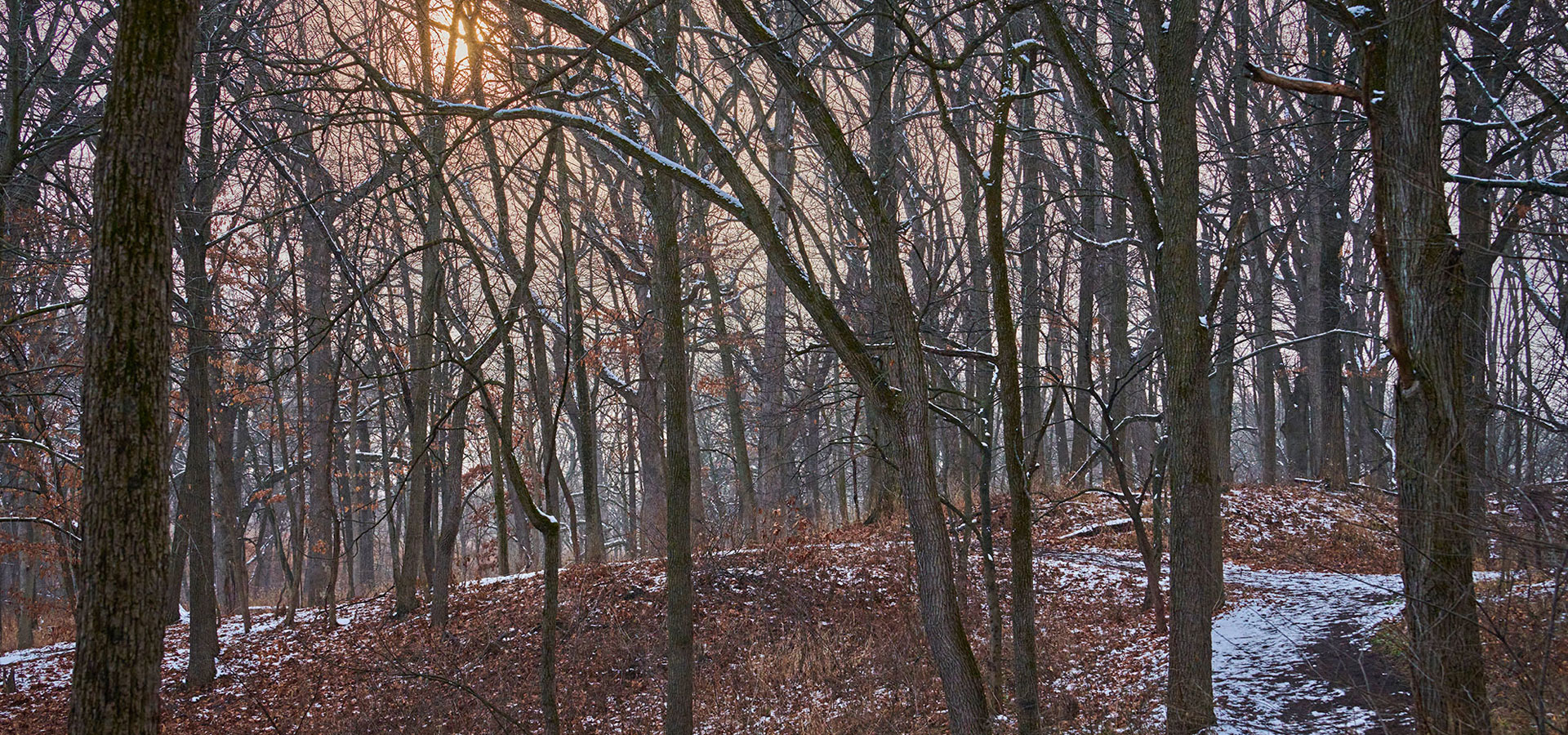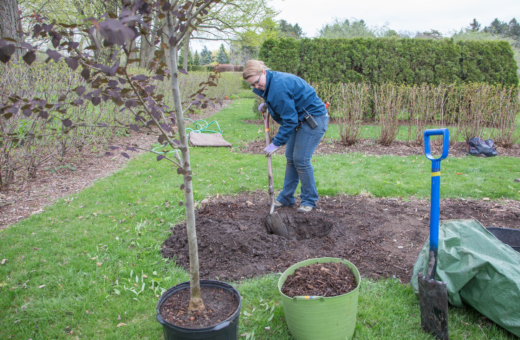December 21, 2023
The darkest day of the year also brings the promise of light. For thousands of years, people have marked the winter solstice—the shortest day and longest night of the year—in the knowledge that the next day, and every day after, will be a little longer until there is enough sunlight to bring the growth of spring.
The solstice, which comes on December 21 in Chicago, is a time when the natural world is gray and brown. Many trees and plants seem dead, though they are only dormant. Nights are long and cold. Solstice celebrations of many peoples and cultures include firelight and evergreen plants, as reminders that light will return, plants will endure, and a new growing season will bring food and beauty from plants.
A number of the customs now associated with Christmas originated in the solstice celebrations of northern Europe.
In the religion of the pre-Christian Celts, who lived in much of Europe before the Romans, the winter solstice was the time that the Oak King—who had grown weaker through the fall as his sacred trees lost their leaves—revived to do battle with his evergreen twin, the Holly King. Like many evergreen plants that seem to defy the cold and darkness of winter, the holly plant has long been associated with midwinter celebrations.
People in what is now Germany decorated evergreen fir or spruce trees with offerings to beckon the return of the growing year. Eventually, the custom moved indoors and became the Christmas tree.
In Scandinavia, a giant oak log, the Yule log, was burned to symbolize strength and endurance, its light defying the darkness and promising regrowth and rebirth. A fragment was saved each year to start next year’s fire. The people who burned Yule logs knew that there were still cold, gray months to come and that it takes time for the gradually lengthening days to have an effect on plants. These customs reflect people’s awareness of the rhythms of the natural world around them.
By the time of the solstice, after days have been growing shorter all through summer and fall, most plants have prepared for winter by entering their sleeping state of dormancy or by hiding away their next generation in the form of seeds. Dormant plants are not growing and need no sunlight.
The lengthening of days is one of several different signals that lead plants into springtime. Another is the warming of the soil, as the sun’s energy accumulates from more hours of daylight.
Many plants, such as apple and cherry trees, also have a chilling requirement—a minimum amount of time they must spend in the cold before they can open their leaf buds or form flowers.
Each species of plant responds to a different combination of signals. Seeds, for example, sprout in response to warmer soil and the moisture from spring rains. Day length, meanwhile, is the main signal for most trees to open their leaf buds and unfurl their leaves.
It can be tricky for plants to read these signals, especially in a place like the Chicago area that has highly changeable spring weather. Another factor is that local gardens include many plants that evolved in different places around the world, and these plants are more likely to misread swings in weather.
Some plants may sprout too soon, in a warm spell that can soon crash into a cold snap. Non-native plants are more likely to be fooled than those that evolved in this climate.
Life is uncertain and so is springtime. But the solstice still means what it has always meant to people in cold northern winters: Starting now, spring is on the way.



